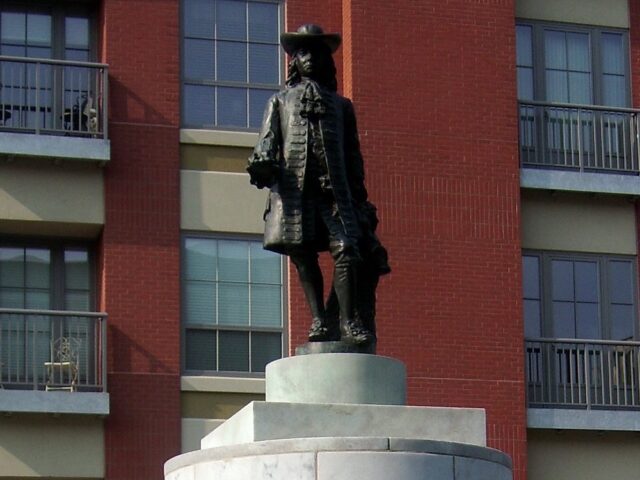In a move that has sparked controversy and drawn criticism, President Joe Biden’s National Park Service, under the leadership of Interior Secretary Deb Haaland, has announced plans to remove the statue of William Penn from a national park in Philadelphia.
The park, which was erected in 1982 to commemorate the 300th anniversary of Penn’s founding of Pennsylvania, will also undergo rehabilitation and feature an expanded interpretation of the city’s Native American history.
Located near the Delaware River at Sansom and Second Streets, the park’s original design will largely remain intact. However, both the statue of Penn and the model of his original home will be removed and not reinstalled. This decision was made after consultations with representatives of the Haudenosaunee, the Delaware Nation, the Delaware Tribe of Indians, the Shawnee Tribe, and the Eastern Shawnee Tribe of Oklahoma.
The National Park Service, headed by Director Charles Sams III, who boasts Native American ancestry like his boss Haaland, oversees a significant portion of Philadelphia’s historic sites. This agency is responsible for nearly 54 acres of historical sites in the city’s Old City neighborhood, including Independence Hall, where the Declaration of Independence was signed, and the Liberty Bell. These sites attract millions of visitors each year, seeking to learn more about the founding of the United States.
The new park will be designed by the renowned architectural firm Venturi & Scott Brown Associates, which was originally commissioned to design the park in 1982 by the Friends of Independence National Historical Park. The park is named after Penn’s ship, the Welcome, which brought him from England to the colony in 1682.
The Biden Administration is taking down a statue of William Penn. Not Robert E Lee, not Stonewall Jackson, but William Penn. These people hate America, there’s no doubt anymore. https://t.co/ZHVrJ8GkQ9
— David Marcus (@BlueBoxDave) January 7, 2024
Penn, a Quaker, founded the colony of Pennsylvania on the principles of religious and civil freedoms. His Charter of Privileges, enacted in 1701, served as the governing document for the colony and reflected his belief in religious freedom. Philadelphia became known as a Quaker city, with many Quaker meetinghouses and schools still present today. Quakers were also at the forefront of the abolitionist movement, with their fight against slavery in Philadelphia dating back to the 1680s.
However, in recent years, Penn’s legacy has come under scrutiny. During the George Floyd protests in 2020, Penn’s history as a slave owner was brought to light by local National Public Radio affiliate WHYY. While he granted freedom to some of his slaves and Quakers protested slavery, WHYY criticized the fact that the Quakers did not officially denounce slavery for another 50 years.
This decision by the Biden administration to remove Penn’s statue and downplay his role in the founding of Pennsylvania is part of a larger trend to erase any historical figures who do not align with current ideals. It follows a similar pattern of removing statues and renaming buildings or institutions that honor Confederate leaders or slave owners. The proposed bill by Democrat lawmakers to remove all Confederate memorials from display in the United States Capitol only further highlights this ongoing issue.
The removal of Penn’s statue from a park named in his honor raises questions about the erasure of historical figures and their legacies. While acknowledging and teaching the full and sometimes problematic history of our nation is important, completely removing and downplaying the contributions of individuals who played a significant role in shaping our country is concerning. As this trend continues, it is essential to have honest and open discussions about the past, rather than simply erasing it.

